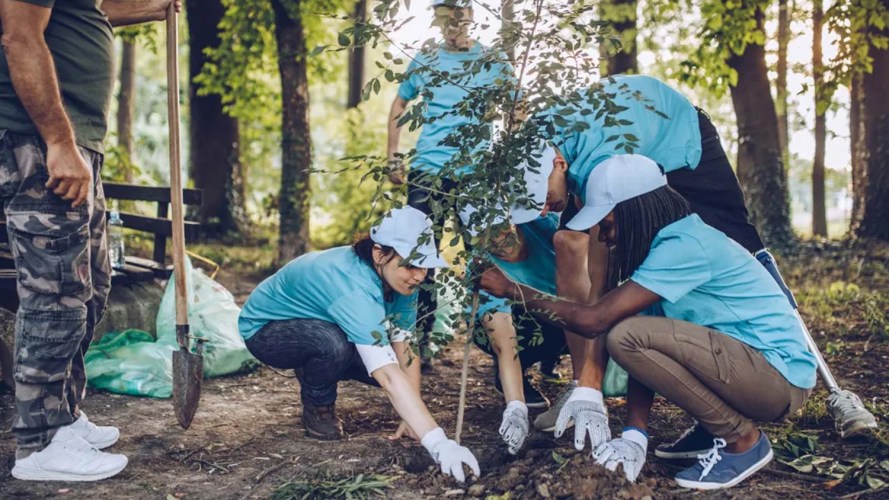Many charities and nonprofits struggle to connect and build relationships with younger donors. They wonder: Do Millennials and Gen Z just not care about philanthropy? But many young people are willing and able to contribute to causes they believe in. If you want to win over Millennial and Gen Z supporters, you need to do three things: connect with their activism, engage with them where they are, and demonstrate your impact.
1. Connect with their activism
For many young people today, activism is not a hobby. It’s focused on their continued survival. They know our planet is doomed without swift and decisive climate action. They may have been marginalized or abused for their race or gender expression. They are drawn to activism for personal reasons, and they know their futures rely on social justice. If we don’t take them seriously, we will not succeed in engaging them. So we must believe in their ability to change the world. Because they can—and we can help them do it.
The good news is, if you succeed in earning their support, they’ll help you spread your message far and wide. Gen Z and Millennials see the world in terms of connection. They are united by shared interests and values, not physical proximity. They understand the concept of a global community and are good at making connections with people they might never meet. The pandemic and the shift online has helped them connect with people who share their values and find diverse role models. Their world is big—and everyone in it matters.
Maybe your cause isn’t an obvious match with activist themes. If you’re a cancer research foundation or a hospital network, you don’t need to pivot to working on antiracism or climate action. But if you dive deep, I bet you can find a shared value that fulfills young people’s desire for a better world. Maybe that message is “Everyone has the right to good health care.”
And if you’re not sure what messages will resonate with young people, ask them! This can be formal, like a focus group, but it doesn’t have to be. Talk to the younger people in your lives and communities. Invite them to co-design the message with you. Find out what matters to them and what they want to hear from you.
2. Engage with them where they are
It’s not enough to simply fine-tune the message. You need to bring it to them where they live. Millennials and Gen Z live online—but not in their email inbox, like older generations do. You’ll reach them on social media platforms or in their text messages. Be sure to tailor your messages to each medium—don’t cross-post the same photo and slogan to every social network.
Make your message shareable. Whether it’s volunteering or giving, younger people want to do it with their peers—their “team”—so make it easy for them to engage with you and each other on the channels they prefer.
Organizations like World Central Kitchen and UNHCR are doing incredible work on Instagram and TikTok during the current humanitarian crisis in Ukraine, using photos and video to share stories of helpers and displaced people. It’s immediate and illustrates the impact these organizations are creating. They’re meeting young people where they are: browsing on these platforms, where people are primed to hear their message that “People are suffering. But you can help make it better right now.”
Keep in mind that when we ask youth to help us, we are also helping them: Giving is a way for young people to activate against the grief they feel about crises in our world. They feel better when they do something. It helps them connect with each other AND have an impact on issues they care about. Remember: People give to people, and people respond to peer interaction. This is particularly true for younger generations.
It’s also important to set engagement goals with Millennials and Gen Z that aren’t donation-focused. The by-product of excellent engagement is good fundraising. Once you connect with people and your mission resonates with them, then you can build a donor relationship.
3. Demonstrate your impact
For Millennials and Gen Z, their dollars are a way of expressing themselves and influencing the world. Many are already in the habit of giving in smaller amounts, in places like Facebook fundraisers and Patreon. Show them how their dollars can have specific and measurable impact. When they do give, send thanks and impact reports regularly to demonstrate how their support is changing lives.
How do we show impact well? By being clear and genuine. Young people are impatient for change and fed up with excuses. They don’t want to hear “we’re trying” or “we’re on a journey.” They want to see change happening now. Show them how you’re making a difference. Show them you’re just as restless for inclusion and progress as they are.
One great way to demonstrate impact is to let young people hear from other young people about your achievements. Let them see themselves leading and sharing their stories. Once you build those relationships, invite them to become part of your messaging to others. They will become loud, well-connected, generous supporters if you build those relationships. And in turn, we will change the world.
For more nonprofit insights, download our Nonprofit Trends Report.
Team Earth has landed
We believe that business is the greatest platform for change, and success should be for everyone on Earth and the planet itself. Because the new frontier? It’s right here.































